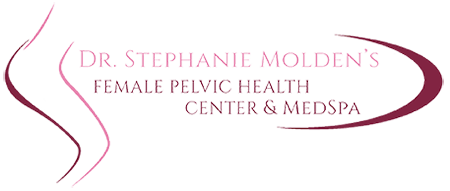
Treating Female Pelvic Conditions with Non-Surgical Options
Pelvic Muscle Training/Exercises (PMT/PME)
Also known as Kegel exercises, PME techniques are an effective treatment option for urinary incontinence and strengthening pelvic organs. They are especially important after surgery to maintain strength and optimize outcomes, and are very useful in prolapse prevention. Most women require guidance from a medical professional to learn how to contract the pelvic floor muscles correctly. We provide PMT sessions in our office with the latest computerized equipment on a regular basis along with electrical stimulation when appropriate.
Biofeedback
This term refers to various techniques that teach patients bladder and pelvic muscle control by giving positive feedback when the patient performs the desired action. This feedback can be from an electronic device or directly from a health professional.
BOTOX® for Overactive Bladder (OAB)
BOTOX® is FDA approved to treat overactive bladder symptoms such as a strong need to urinate with leakage, urgency and frequency in adults when another type of medication (anticholinergic) does not work well enough or cannot be taken.
Urgent PC
The Urgent PC Neuromodulation System uses percutaneous tibial nerve stimulation (PTNS) to treat overactive bladder and associated symptoms of urinary urgency, urinary frequency and urge incontinence.
Bladder Training
This treatment for urge incontinence involves teaching a patient to urinate according to a timetable rather than an urge to do so. The scheduled time between trips to the bathroom gradually increases as the patient's bladder control improves.
The Bladder Diet
This is a list of dietary irritants to the bladder. Avoiding the items on this list may greatly improve certain bladder symptoms such as frequency, urgency or pain.
Medications
Commonly prescribed drugs used in the treatment of urge incontinence include Detrol LA, Ditropan XL, Oxytrol patch, Sanctura, Enablex, Vesicare, Toviaz, and Gelnique.
Related Links:







 Dr. Stephanie Molden is motivated by the gratification of helping women with pelvic disorders—including pelvic organ prolapse, urinary and bladder problems—return to their normal lifestyle. She completed her training in Urogynecology with a three-year fellowship in a leading training program in the Lehigh Valley. Dr. Molden is an active member of the American Urogynecology Society (AUGS), participating in ongoing continuing education and research initiatives.
Dr. Stephanie Molden is motivated by the gratification of helping women with pelvic disorders—including pelvic organ prolapse, urinary and bladder problems—return to their normal lifestyle. She completed her training in Urogynecology with a three-year fellowship in a leading training program in the Lehigh Valley. Dr. Molden is an active member of the American Urogynecology Society (AUGS), participating in ongoing continuing education and research initiatives. 
